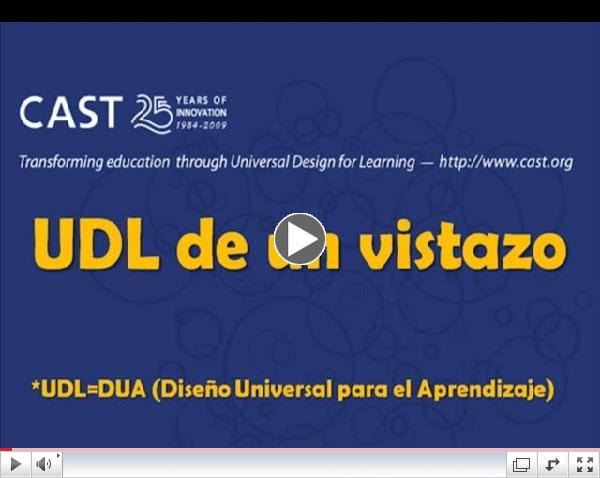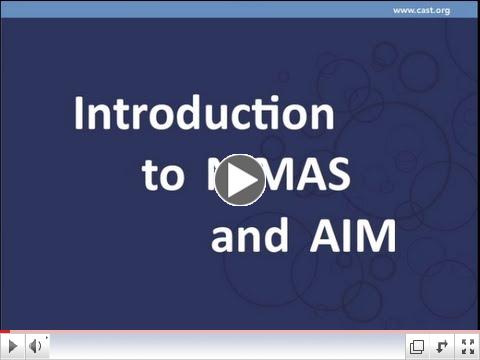|
NEW LOCATIONS
LIU Post
Riggs Hall
720 Northern Boulevard
Brookville, NY 11548
LIU Brentwood
101Crooked Hill Road
Brentwood, NY 11717
LIU Riverhead
121 Speonk-Riverhead Rd
LIU Building
Riverhead, NY 11901
|
|
Drop-in Centers Hours
Monday:
LIU Post
9:30am-4:30pm
Tuesday:
LIU Brentwood
9:00am-3:00pm
Wednesday:
LIU Riverhead
10:00am-2:00pm
LIU Post
9:30-4:30pm
LIU Post
5pm-8pm
Thursday:
LIU Brentwood
9:00am-3:00pm
Friday:
LIU Post
11:30pm-4:30pm
Saturday:
LIU Post
9:00am-12:00pm |
 | | UDL de un vistazo (Español) |
 | | UDL At A Glance |
|
 | | Introduction to NIMAS and AIM |
|
|
|
|
Dear Friends and Colleagues,
We hope you are all staying warm in this very cold weather! Please enjoy the Long Island Parent Center (LIPC) newsletter which is sponsored through the Center for Community Inclusion (CCI) at LIU POST.
Each quarter our newsletters will provide you with current events in education and updates from NYS Education Department, the US Department of Education and regional resources. Our staff enjoy sharing the most interesting articles and information we find as we navigate through our daily work schedules. What we do know is that there never seems to be enough time to read every article, every e-mail, and every memo that is distributed throughout the field. Our goal is to conveniently share with you the most important and interesting information that we find in a timely manner.
We encourage you to join our list serve (click here) so in addition to this newsletter, you will receive periodic publications and notices that might be of interest to you. Last month, I had the honor of attending the IDEA Partnership Meeting (www.ideapartnership.org) in Alexandria, VA. The New York State Community of Practice (NYSCOP) on Family, School and Community Collaboration was asked to present on the successful stakeholder collaboration that we see increasing continuously in our state. The mission of the IDEA Partnership is to bring together all stakeholders in education using the framework of "Communities of Practice" and "Leading by Convening." At the January meeting, the partnership launched its latest publication titled "Leading by Convening; A Blueprint for Authentic Engagement." In this issue of our newsletter, we are providing you with the link to familiarize yourself with the publication. This is so valuable and worth the time to review. We will be using this document as we move forward in our work as both parents and professionals. It is more than a framework; it is a way of working that is proven to be successful. Read with an open mind, embrace the concept ,and be ready to think about all of the great opportunities that can arise from building relationships! The NYSCOP has been in existence for over 8 years and hosts over 200 members from all aspects of education.
Please watch for our next newsletter which will be highlighting the work of the IDEA Partnership and NYSCOP on Family, School and Community Collaboration. Looking forward to seeing you at our upcoming events.
As always, my focus in life and in my professional capacity has been building positive relationships. As we move forward with the work of the Long Island Parent Center, building positive educational teams will always be a priority. Parents and families of children with special needs, as well as the students themselves, are the link to improving outcomes. Our goal remains to provide technical assistance, support, and resources to families while welcoming professionals at all of our events. We are here to serve you and truly look forward to our work together. Please feel free to contact us to arrange a training, ask a question, or just check in!
Helene Fallon, Project Coordinator
Leading by Convening; A Blueprint for Authentic Engagement
http://www.ideapartnership.org/documents/NovUploads/Blueprint%20USB/NASDSE%20Leading%20by%20Convening%20Book.pdf
Stephen Boese;LDA, Helene Fallon;LIPC/LIAC,
Jacqueline Harris;LIASEA, Kathryn Cappella; NYSDAAN
IDEA Partnership Meeting, January 2014
|
Acronyms & Key Terms
AIM - Accessible Instructional Materials
The Individuals with Disabilities Education Act (IDEA) requires school districts to provide accessible versions of instructional materials to students who are blind or otherwise unable to use printed materials. Students with disabilities should receive materials in accessible formats at the same time as their peers receive their textbooks.
Instructional materials: includes textbooks and related core materials such as workbooks www.p12.nysed.gov/specialed/aim
ACESS-VR - Adult Career and Continuing Education Services-Vocational Rehabilitation (ACCES-VR) offers access to a full range of employment and independent living services that may be needed by persons with disabilities through their lives.
IHO - Impartial Hearing Officer
Impartial Hearing Officer - An individual who is duly appointed by a school district to act as decision-maker/judge when there is a dispute concerning provision of special education services to a student with a disability and where the parents have implemented their due process rights by demanding an impartial hearing (sometimes referred to as a "due process hearing"). The IHO generally has to have had some training in special education laws and is on a state-approved list.
CCSS - Common Core State Standards
The Common Core State Standards provide a consistent, clear understanding of what students are expected to learn. The standards are designed to be robust and relevant to the real world, reflecting the knowledge and skills that our young people need for success in college and careers.
QIAT - Quality Indicators for Assistive Technology Services
QIAT is a set of quality indicators, intent statements, and common errors for eight areas important to the development and delivery of assistive technology services. Each of the eight areas - Consideration, Assessment, AT in the IEP, Implementation, Evaluation of Effectiveness, Transition, Administrative Support and Professional Development - should be fully explored because the areas are complementary in nature. Learn more about QIAT at http://www.qiat.org
SETT - Student, Environments, Tasks and Tools. The SETT Framework is a tool that helps teams gather and organize information that can be used to guide collaborative decisions about services that foster the educational success of students with disabilities
UDL - Universal Design for Learning
Process of designing instruction that is accessible by all students; UDL includes multiple means of representation, multiple means of expression, and multiple means of engagement; the focus in creation of UDL curricula is on technology and materials.
www.udlcenter.org
Supplementary Aids and Services
IDEA defines "supplementary aids and services" as follows:
§300.42 Supplementary aids and services. Supplementary aids and services means aids, services, and other supports that are provided in regular education classes, other education-related settings, and in extracurricular and nonacademic settings, to enable children with disabilities to be educated with nondisabled children to the maximum extent appropriate in accordance with §300.114 through 300.116.
|
|
Highlighted Acronyms
CAST | Center for Applied Technology
Website: http://www.cast.org/
Articles: http://www.cast.org/library/bycast/index.html
CAST is an educational research and development organization that works to expand learning opportunities for all individuals through Universal Design for Learning (UDL) See list of acronyms.
CAST's mission: "To expand learning opportunities for all individuals, especially those with disabilities, through the research and development of innovative, technology-based educational resources and strategies."
Learning tools link: http://www.cast.org/learningtools/index.html
SETT | Student, Environments, Task and Tools
Website: http://www.joyzabala.com
Using the SETT Framework
Level the Learning Field for Students with Disabilities
Joy Smiley Zabala, Ed.D., ATP
SETT is an acronym for Student, Environments, Tasks and Tools.The SETT Framework is a tool that helps teams gather and organize information that can be used to guide collaborative decisions about services that foster the educational success of students with disabilities. Originally developed to support assistive technology selection and use in educational settings, the principles of the SETT Framework have been used to guide decisions about a much broader range of educational services, and also, with minor adjustments, have been successfully used in non-educational environments and service plans. The SETT Framework is based on the premise that in order to develop an appropriate system of tools (supports -devices, services, strategies, accommodations, modifications, etc.) teams must first develop a shared understanding of the student, the customary environments in which the student spends time, and the tasks that are required for the student to be able to do or learn to do to be an active participant in the teaching/learning processes that lead to educational success. When the needs, abilities, and interests of the Student, the details of the Environments, and the specific Tasks required of students in those environments are fully explored, teams are able to consider what needs to be included in a system of tools that is Student-centered, Environmentally useful, and tasks focused.
|
|
Person Centered Planning
OPWDD Opening The Front Door to Possibilities
Opening the door to a richer, fuller life-that is the goal of the NYS Office for People With Developmental Disabilities (OPWDD) new Front Door-a person-centered approach for people with developmental disabilities that prioritizes individual choices, needs, and desires in making decisions.
Opening the Front Door to Possibilities
The Front Door strives to:
- Improve the way people learn about OPWDD and available service options
- Better connect individual needs to available services
- Give people as many opportunities as possible for self-direction
Front Door services rest on the philosophy of self-determination and the idea that people with developmental disabilities have the right to:
- Enjoy more meaningful relationships with family, friends, and others in their lives
- Experience personal growth
- Fully participate in their communities
- Live in the home of their choice
Ultimately, opening the Front Door means people with developmental disabilities will have the opportunity to pursue their dreams and live the lives of THEIR choosing.
read more...
|
|
Transition Planning
Setting Lifelong Goals
Jennifer Graham and Peter Wright, Esq.
www.wrightslaw.com
Transition Planning Checklist
While IDEA 2004 provides the legal requirements for transition services to support your child's goal of employment in the community or further education, there are several things that parents and students must do to prepare for life after high school.
|
|
We look forward to working with you. Please check out the LIPC Website for updates on future trainings and workshops and be sure to look for our next newsletter in the spring! |
|
|